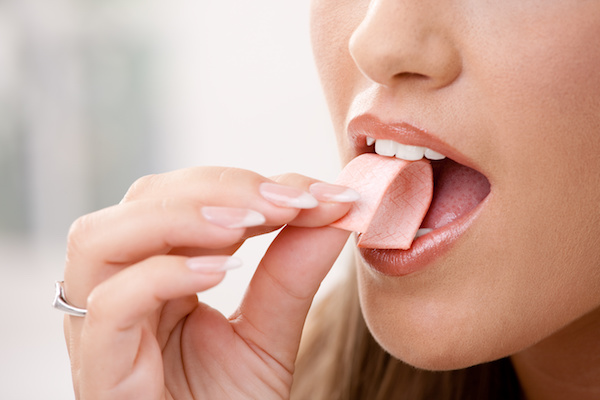
Regular vs. Sugar-Free Gum: What’s the Difference?
While standing in the checkout line at the supermarket you may get the urge to grab a pack of gum. Before you grab just any pack of gum and continue with your checkout, it is important that you read the label and make the right choice by selecting a sugar-free variety instead of a regular variety.
To help you understand why it is so important that you choose a sugar-free gum, we will take a look at the difference between regular gum and sugar-free gum.
The Process Behind How Gum is Made
Before you can learn how regular gum differs from sugar-free gum, you have to understand how all chewing gum is made.
Manufacturers take a sticky, chewy substance called gum base and turn it into neatly cut sticks of gum. Gum base is made from the sticky, tacky resin that comes from trees and is considered the main ingredient of chewing gum.
Gum base is a tasteless substance. In order to create gum that is flavorful and sweet, manufacturers use artificial or natural flavorings, preservatives, and colorings. Manufacturers will also use glycerin to help increase the moisture of the gum and vegetable oil to make the gum soft and chewy.
The Difference Between Regular Gum and Sugar-Free Gum
The process of making regular and sugar-free gum is the same with the exception of one thing – the flavorings and sweeteners used. It is this difference that makes sugar-free gum completely different from regular gum.
Regular gum is filled with a wide variety of preservatives, sugars, and artificial flavoring. All of these things are necessary to create that fun, wild flavors people love, but adding them to the gum can dramatically impact your oral health.
When you chew gum that contains sugars, preservatives, and artificial flavorings you are at an increased risk for developing cavities. Your risk for cavities increases because the sugars, preservatives, and artificial flavorings are released into the mouth, teeth, and saliva. Over time and with prolonged exposure to sugars, preservatives, and artificial flavorings, cavities and tooth decay can develop in your mouth.
Sugar-free gum, on the other hand, has sweeteners, but they are safer for your oral health. Typically, sugar-free gum will use non-cavity causing sweeteners like mannitol, aspartame, and sorbitol. These ingredients provide the sweetness you want in chewing gum without putting you at risk for cavities and other dental problems.
Why Use Sugar-Free Chewing Gum Over Regular Chewing Gum
Chewing gum on a regular basis, especially after meals, can help improve your oral health, but only if you choose the right type of gum. Choosing sugar-free gum over regular chewing gum will have a positive impact on your oral health.
Some of the benefits you will receive when you chew sugar-free gum include:
- Increased saliva production which helps neutralize tooth-destroying acid in the mouth
- Reduces the development of plaque
- Reduces gingivitis
- Strengthens teeth by remineralizing
- Helps with digestion
How to Know if Chewing Gum is Safe to Use
The American Dental Association, or ADA, makes it extremely easy for you to know what gums are safe to use. Gums that have gone through a rigorous process and proved they are safe for sugar-free chewing earn an ADA Seal of Acceptance. The ADA Seal of Acceptance is a small logo that is placed on the label of the gum so you know it has been proven to be safe.
An ADA Seal of Acceptance isn’t just given to any type of gum. The manufacturers of the gum must show laboratory studies and tests, as well as clinical studies that prove the gum is safe to eat. Once this information has been provided and reviewed by a team of dentists, the manufacturers can be granted the ADA Seal of Acceptance if it is determined the gum is safe for sugar-free consumption.
If you like to chew gum, but are unsure whether a certain brand is okay to consume, feel free to talk about it with our dentist. Our dentist will gladly help you learn how to tell whether your favorite chewing gum is safe to use or if you should switch to a different, safer brand. Call us to schedule an appointment. We look forward to seeing you.